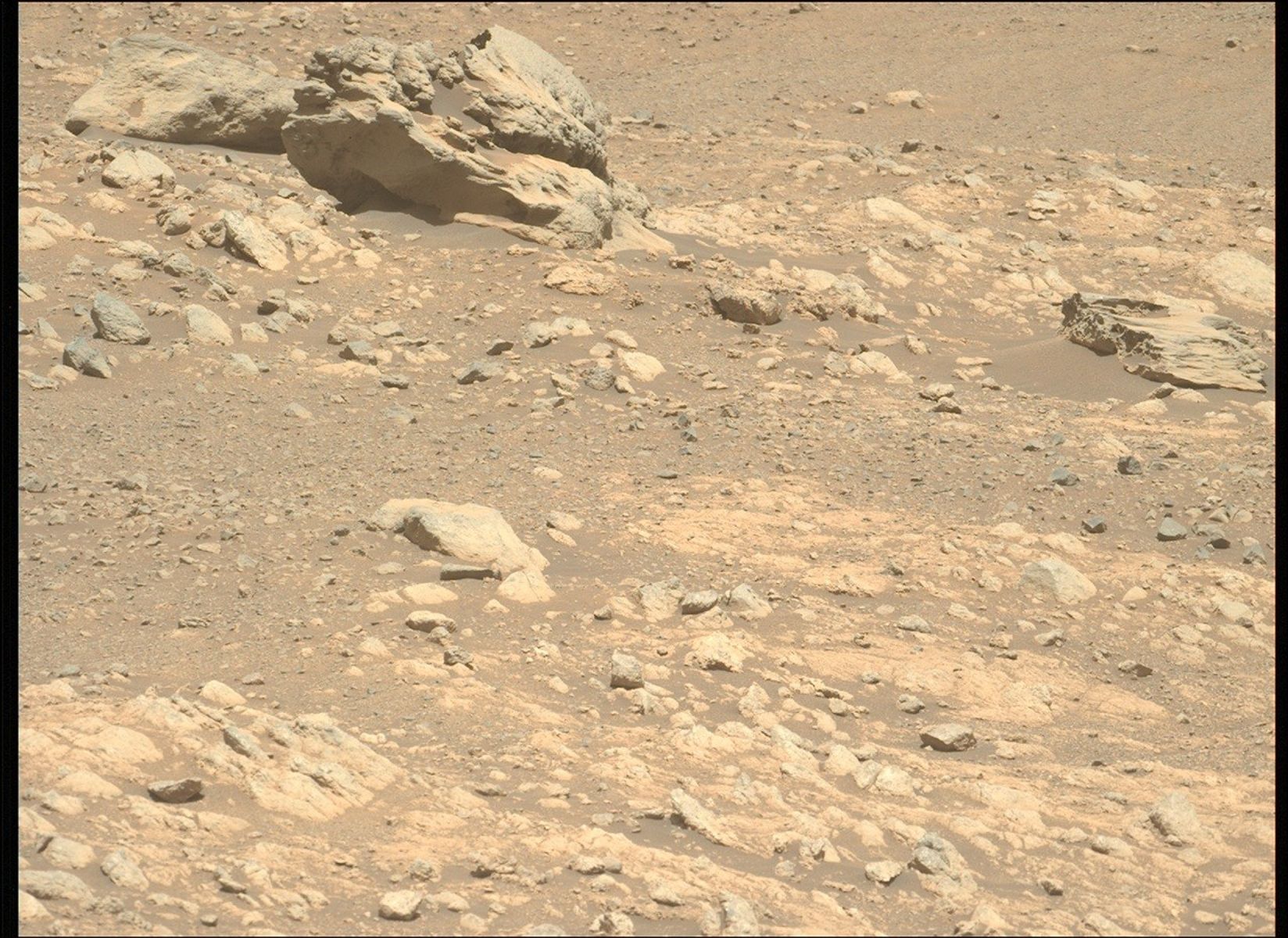NASA’s Perseverance Mars rover has made another strange discovery.
While investigating the Vernodden area of Jezero Crater – the crater where the rover first landed on the Red Planet in February 2021 – it found an unusually shaped rock that is not meant to be on the surface of Mars.
Where it may have come from is anyone’s guess, but the “unusually shaped rock” – possibly a meteorite – has elements typically associated with iron-nickel meteorites formed in the core of large asteroids, the agency’s Jet Propulsion Laboratory said in a blog post.
Nickel-iron alloy is also a primary component of the Earth’s core.
The rock, has a diameter of about 31 inches, has been named “Phippsaksla,” and was identified as a target for the rover because of its high-standing appearance.
It literally stood out among the lower lying, fragmented rocks in the area.
The rover was able to analyze its make up using the SuperCam instrument, which examines rocks and soils using a camera, laser and spectrometers that measure properties of light.
The SuperCam and “Percy” – the rover – are also looking for chemical materials that could be related to past life on Mars.
Earlier this year, Acting NASA Administrator Sean Duffy and scientists said they had found the clearest signs of life on Mars to date in Jezero Crater.
A sample Perseverance had collected from an ancient dry riverbed contains potential biosignatures.
“To the best of our current knowledge, some of the chemistry that shaped these rocks required either high temperatures or life, and we do not see evidence of high temperatures here,” Texas A&M University geologist Dr. Michael Tice said in September.

During their own missions, past Mars rovers, including Curiosity, Opportunity and Spirit also found iron-nickel meteorites, including the “Lebanon” meteorite discovered in 2014 and the “Cacao” meteorite spotted in 2023.
Those were found in Gale Crater, which lies roughly 2,300 miles away near the Red Planet’s equator.
“As such, it has been somewhat unexpected that Perseverance had not seen iron-nickel meteorites within Jezero Crater, particularly given its similar age to Gale crater and number of smaller impact craters suggesting that meteorites did fall on the crater floor, delta and crater rim throughout time,” NASA said.
More work needs to be done to confirm Perseverance has finally found one.
“But if this rock is deemed to be a meteorite, Perseverance can at long last add itself to the list of Mars rovers who have investigated the fragments of rocky visitors to Mars,” NASA said.
Jeff Bezos’ Blue Origin launches huge rocket after solar storms delays
Nasa medical chief and SpaceX astronaut heading to Scotland’s largest space expo
Space forecasters say severe solar storm could bring auroras — but hit communications
‘Star factory’ is birthing stars 180 times faster than our galaxy
Decathlon unveils first space suit for European astronauts
‘Iron rust’ found in lunar soil upends what we knew about Moon’s surface







